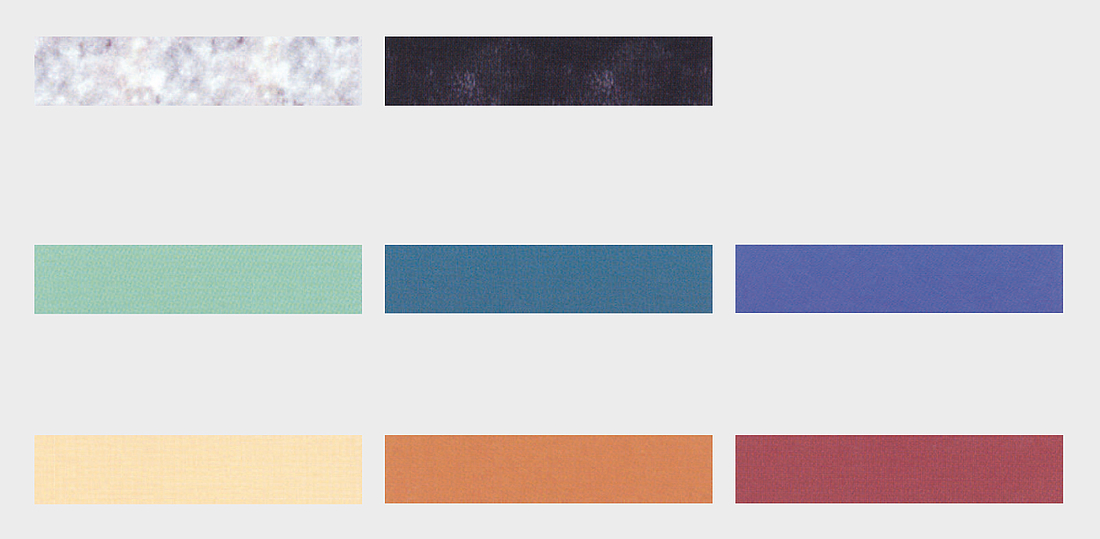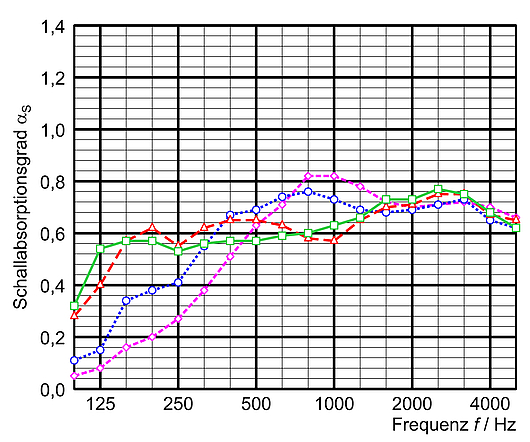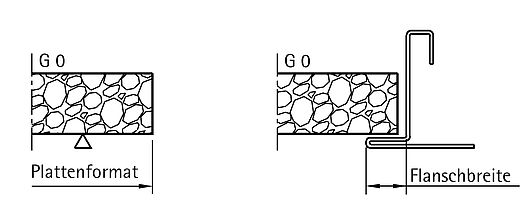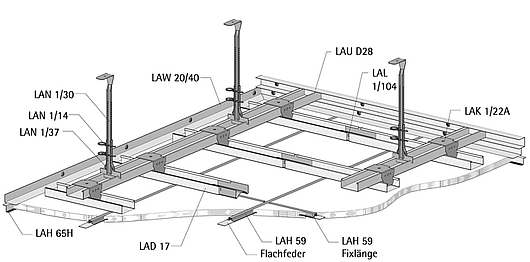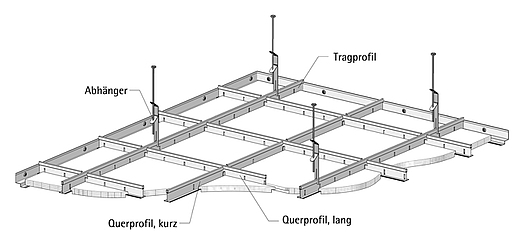A2Coustic / A2irglass
Expanded glass granulate and perforated laminate
(sound absorbing) expanded glass granulate and laminate
Wilhelmi A2Coustic acoustic panels from Lahnau Akustik GmbH are made from recycled glass granulate and bound with inorganic binder. The front and rear sides of the acoustic panels are laminated with a perforated HPL laminate supplied by Resopal. Thanks to their extremely robust surface these acoustic panels are ideal for installing in wall and ceiling areas. The numerous different patterns available mean this product not only fulfils acoustic requirements it is also pleasing on the eye.
Base panel:
Expanded recycled glass granulate, bound with inorganic binder
Surface:
A2COUSTIC – Core panel A2
Front and rear RESOPAL® laminate, visible side laminated, same material on rear, colour determined by manufacturer to DIN 438; perforated up to edge, same pattern or same material on rear, colour determined by manufacturer; percentage of perforated area 11.2% (1.5 mm round holes in staggered rows)
A2IRGLASS – Core panel A2
Front and rear Resopal® laminate to DIN 438; non-perforated, same pattern or same material on rear, colour determined by manufacturer.
Care / refurbishing:
Normal household, perforated panels, vacuum clean
Edge configurations:
Untreated or with ABS edge coated in the same colour tone as the surface. Grooved edges are not available.
Panel thickness:
Approx. 20 mm (depending on laminate)
Building material class:
base panel A2 (s1, d0) (non-flammable)
Format:
2480 mm x 1230 mm
Weight per unit area:
Approx. 9.5 kg/m2
Humidity:
Permanent high levels of humidity (> 70%) affect the dimensional stability of the panels.
Processing:
With commercially available tools
Sound absorption level:
See measuring curve in the chapter Acoustic test certificates
Products from Lahnau Akustik offer numerous design options. We offer a huge choice of special colours and surfaces. We are happy to offer advice.
Surface:
A2COUSTIC – Core panel A2
Front and rear RESOPAL® laminate, visible side laminated, same material on rear, colour determined by manufacturer to DIN 438; perforated up to edge, same pattern or same material on rear, colour determined by manufacturer; percentage of perforated area 11.2% (1.5 mm round holes in staggered rows)
A2IRGLASS – Core panel A2
Front and rear Resopal® laminate to DIN 438; non-perforated, same pattern or same material on rear, colour determined by manufacturer.
(the colour and structure shown in images of surfaces can differ slightly from the original)
We develop effective acoustic building materials in close cooperation with scientists, clients, architects and contractors. Utilizing these high-quality materials facilitates optimum speech intelligibility in our built-up environment.
At the same time, the design options available with regard to material, surface, colour and shape are so varied that it is possible to efficiently combine the demands placed on man and an eco-friendly architecture with one another on the basis of the latest scientific findings.
A variety of acoustics tests are available to download from the Download archive.
Constructions & details:
Information about the following constructions is available here:
Overview of our standard grooves:
The wide variety of possible constructions makes it necessary to offer a broad portfolio of groove variants.
Acoustic panels from Lahnau Akustik GmbH are suitable for both T-profile substructures as well as for numerous substructures developed by us.
The PDF document contains an overview of the available variants.
Different grooves are possible on request.
Installation system with hat channels
- The ceiling system designed to meet the highest requirements vis-à-vis stability; also suitable for large sized acoustic panels
- Panel lengths up to 2500 mm panel widths up to 625 mm; wider panel widths with added reinforcement on request
- Ceiling void remains accessible; all acoustic panels can be removed and reinstalled using tools; no need to push up into the void to remove
Lay-on / lay-in system with visible T-profile
- The ceiling system for a variety of grid dimensions; easy access to ceiling void
- Panel lengths up to 2500 mm, panel widths up to 625 mm with a T-profile width of 15 mm or 24 mm
- Square formats up to 1250 x 1250 mm can be installed without added reinforcement. Possible to remove and reinstall without tools
Cleaning Resopal surfaces
It is possible to clean surface dust using a dust cloth. A damp cloth is sufficient to remove adherent soiling (e. g., fingerprints); if necessary, you can also use a normal general-purpose household cleaner or vinyl cleaner.
Do not use abrasive cleaning agents or sponges to clean high gloss finishes.
If in any doubt, test clean an inconspicuous spot.

Quality management
It is possible to achieve continual improvement with the aid of quality management by involving all members of staff and optimizing company procedures across all departments. Fulfilling customer requirements is central to all we do. An integrated management system for quality, environment and occupational health and safety according to EcoStep.
Environment management
As a manufacturer of environmentally friendly products based on the raw materials glass and metal Lahnau Akustik GmbH is passionately committed to protecting the environment. We wish to contribute towards balancing economy and ecology with the aim of achieving a sustainable development taking into consideration the needs of people and nature.
The ecological benefits of acoustic panels made of recycled glass:
- 100% recycled glass
- Sustainable
- Conserve natural resources
- Winner of many ecological awards
- Optimize your LEED rating
- Healthy home environment “built-in”
- Reduce CO2
- Optimize heat insulation
With you in mind, we have introduced:
An integrated management system for quality, environment and occupational health and safety. An expert assessment documented in a report verifies that the management system fulfils
requirements and, as a consequence, the core stipulations of the following standards:
ISO 9001:2000
ISO 14001:2004
ILO guidelines on occupational safety and health (2001)

